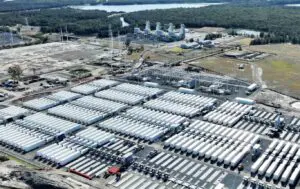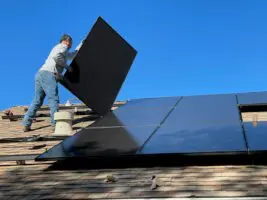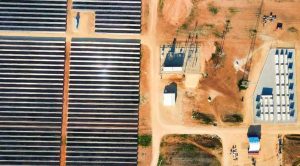August has smashed last month’s record for the amount of time it took Victoria’s Solar Rebate slots to run out. Three days? How about two hours?
Already at a crisis level, the rebate scheme has now entered nightmare territory, with solar installers across the state – already hurting – forced to sit out another month without sales.
Nigel Morris has presented some excellent analysis of the numbers put forward by Solar Victoria CEO Stan Krpan in this week’s Solar Insiders podcast.
As he pointed out, in July only about half the 660 solar companies that uploaded quotes to the Solar Victoria platform were able to get one or more rebates approved.
Even among those who did manage to get a win, the number of rebates approved just isn’t enough to keep a business afloat, particularly after 2+ months of negligible sales at the end of the last financial year.
August must feel even worse.
It’s time to right this ship before it sinks.
Let’s be very clear. The Victorian government has severely misjudged demand for the rebate. You could almost forgive the government for the mess we’re currently in, as their intentions were good and it is admittedly extraordinarily difficult to get incentives right.
But it’s not like we haven’t been here before. Time and time again – both locally and internationally – government subsidies have either been too small to make a difference, or too large and therefore blow out a budget, with their subsequent removal leaving a crater.
What’s more, with even just a cursory look at the numbers, it’s not hard to see that the parameters were out of whack from the start: Rebate undersupply occurred in the first year of the program, where 32,000 rebates were delivered in 8 months (roughly 4,000/month).
The program took residential installation levels from 3,000/month up to 5,000/month for that eight-month period. So, on the up-side, it brought 16,000 new solar installations that wouldn’t have proceeded without the rebate.
But it also funded 16,000 that would have happened anyway. And such was the impact of the scheme, only 1,000 customers/month of the original 3,000/month were ineligible for the rebate.
That makes it problematic even to simply dump the program. In the space of 12 months, the government has conditioned two-thirds of the original market to expect a rebate, and those customers will take a long time to return to the market in the absence of a rebate. Hence the crater.

Now if the original program was delivering rebates to ~4000 customers/month, its pretty obvious that 3,333 rebates per month will not meet the market demand.
The supply of rebates sufficiently below demand that you’ll have customers lining up at 9am on the first of every month, trying to get a rebate – until they eventually give up. In that case, they may not end up getting solar for another few years.
I could go on about the ramifications of this, but in an under-supplied market it’s wishful thinking to expect the application intensity to smooth out across the month anytime soon. The only way that’s going to happen is if frustrated customers exit the market or insolvent solar businesses exit the market, or both.
What are the government’s options for fixing it?
The way things currently stand, the government needs to listen to its suffering solar industry and take action.
If they don’t, they could very realistically cause the closure of hundreds of solar businesses, leaving thousands of customers without warranty support. How’s that for a perverse change of course for a program that was meant to improve customer outcomes?
This level of government intervention in an existing market simply demands a greater level of government accountability.
The protest movement that has been organised opposing the handling of the rebate has done a great job of shining a spotlight on the pain it has unintentionally wrought upon Victoria’s solar installers. However, it can get a bit murky when it comes down to exactly what the goal of the protest is.
In lobbying the government for meaningful change to the rebate program, it’s crucial to focus on something that is achievable, at least at this stage.
There are four possible options available for ‘fixing’ the scheme. They are:
– Get rid of the Solar Homes Package entirely;
– Change the number (quantum) of rebates available over the course scheme;
– Lower the eligibility threshold for the scheme so that fewer Victorian homes will be eligible (thereby reducing demand for rebates);
– Change the amount (value) of each rebate.
Unfortunately for the government, each of these options will involve going back on election commitments to some degree, but they are the options that are available. Let’s look at each in a bit more detail.
1) Scrap the Solar Homes Package
Off the bat, it’s worth noting that the government is highly unlikely to scrap the program entirely or budge on the quantum of rebates (650,000!) to be available over the course of the scheme’s 10 year life.
These were both key promises in the government’s election campaign and fit into its commendable long-term vision for the state’s energy future. Scrapping it outright would be an embarrassment and potentially worse PR catastrophe than the current state of affairs.
Furthermore, past experience with premium feed-in tariff schemes in various states has shown that scrapping the scheme outright would throw the industry into the doldrums, as consumers will feel that they’ve missed out.
While the case for purchasing a solar system in Victoria without the current rebate is much more favourable than it was 5-10 years ago, it may take the average Victorian some time to become aware of this fact.
In short, scrapping the program is unlikely to solve the primary problem at hand – that installers don’t have a stable market or enough reliable work to keep afloat.
Two thirds of their original customer base (and 80% of their 2018-19 customer base) is now conditioned to expect a rebate, and if it’s removed there will be an investment strike.
This level of government intervention in an existing market demands a greater level of government accountability.
2) Change the number of rebates available
An increase in the total number of rebates available would have budget ramifications.
Unless money can be brought forward from future years of the program, increasing the number of rebates is almost certainly not on the cards without reducing the rebate amount (see Option 4 below).
One potential solution would be to change the staging of the release of this year’s 40,000 rebates.
For example, the government could bring some of them forward from January, which is a ‘sales holiday’ for the industry anyhow.
But if anything, this would only provide temporary relief and might not help in any way to mitigate the stop-start action monthly sales action that we’ve seen since the turn of the financial year.
3) Lower the eligibility threshold
Nor is the government likely to change the means test eligibility threshold of $180,000 combined annual taxable income.
Solar Victoria released information showing you’d have to reduce the household income threshold to below $80,000 to have a material impact upon the uptake.
The Solar Homes program was intended to be universal (or near universal) rather than a low-income program, and this too was part of the government’s pitch to voters.
Even if they were to go this route they’re likely to run into a similar set of problems, as calibrating the pitch perfect threshold level will be a guessing game and balancing act at the same time.
If it’s not lowered enough, it won’t have any impact, but if it’s lowered too much it could squelch demand unnecessarily, leading to disgruntled consumers/voters in the same way that Options 1 or 2 could.
4) Change the value of each rebate
Then we come to the option of changing the value of the rebate itself – currently $2,225 each (set to reduce in January 2019).
It seems odd that this amount would remain the same as it did in 2018-19 when it was over-stimulating the market.
The easiest thing to do would be to reduce the rebate level by 25%, and increase the number of rebates available by 25% too.
This would mean the same budget allocation, happy solar customers, and happy solar industry.
But would a 25% reduction be the right amount?
Even if it was the right amount for September, consumer demand is also affected by solar system pricing, the US dollar, the federal STC subsidy, and electricity and feed-in tariff prices – each of which change dynamically and are all beyond the control of the state government.
A change in any one of these factors could see a return to the current situation, quicker than the government could respond.
Put simply, if a solar subsidy scheme does not dynamically respond to the levels of uptake, then it will either be ineffective or it will cap installation levels.
This is the #1 lesson learned from every solar subsidy program worldwide and in Australia.
So how do you create an incentive scheme that dynamically adjusts to uptake, while sticking to a fixed budget allocation?
You take the approach of the world’s most mature solar subsidy scheme, that now used in Germany. When the market is over-stimulated (i.e. demand for the subsidy outstrips the budget), the subsidy is reduced along with a commensurate increase in the number of subsidies available at the new level (and vice versa).
This is designed as a self-correcting mechanism that prevents the boom-bust stop-start solar coaster from occurring.
Here’s my simplistic explanation of how it works:
– Each period (I’ll assume month, but it could be a quarterly period), the government says ‘we will spend $10m’.
– They start offering the subsidy as 2000x $5000 rebates, and take applications.
– Applications can continue past the initial 2000 allotment.
– At the start of the next month, the number of rebates and their amount is adjusted to reflect the level of uptake in the previous month. E.g. if 3000 rebates were received at $5000 in September, then in October the $10m allocation is adjusted to be 2857x $3500 rebates.
– The 1000 overhang from the September period has first option of taking up October’s rebate, but if they don’t act within 14 days then their place in the queue is forfeit.
– If in October there only turns out to be 2000 rebates secured at $3500 then the government has only spent $7m in that month. In November, the government can afford carry-over $3m, and therefore spend $13m on 3250 rebates at $4000.
The solar industry would need to adjust to a dynamic rebate level, which has plenty of impacts upon business operation.
But these are all a hell of a lot easier than having start-stop business every month, which is the inevitable outcome of a fixed rebate amount.
And if this program is to be a success over its 10-year time-frame, the solar industry and the government both need to take a mature approach, and work together to deliver a program that can stick within a government budget without ruining the industry its intending on progressing.
Warwick Johnston is managing director of SunWiz










